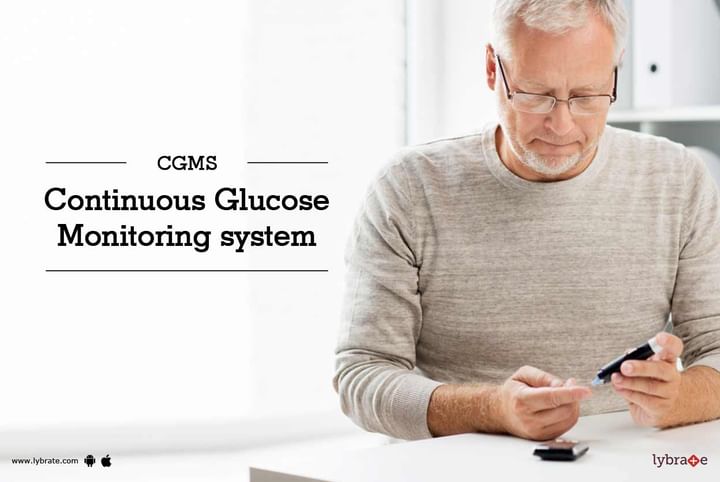CGMS - Continuous Glucose Monitoring system
With the increasing prevalence of diabetes, it is being considered as the next big epidemic – completely related to lifestyle. India has become the diabetes capital of the world with increasing prevalence. The age of onset of diabetes is reducing, with children having diabetes and requiring insulin. The complications arising out of diabetes are also more – there is no bodily system which is not affected by diabetes. For someone who is diabetic, keeping blood sugars under check is the constant challenge. Uncontrolled blood sugars can lead to transient complications including loss of consciousness and fatigue and long-term complications including neuropathy and retinopathy.
What is CGMS:
Continuous glucose monitoring system is an FDA approved device. This device has a sensor that is placed either in the belly area or on the arm. These sensors identify the sugar levels in the body fluid and send it to a wireless which is worn by the monitor patient as a belt. Readings can be obtained at regular intervals, ranging from every 5 to 15 minutes.
CGMS measures blood sugar levels every 15 mins, that is 96 times a day The data can be downloaded into a persona device – smartphone, tablet, or laptop and used for further analysis. It does not replace the need for routine monitoring, but helps improve vigilance with a constant monitoring. It can help detect trends and patterns and helps the doctor identify periods of the day when the sugars are too high or too low. The amount of insulin or antidiabetic medication required can be adjusted based on sugar levels. The exercise regimen can be defined including the type, time, and duration of workout. Meal planning can be customized to suit body needs in a better manner. Night-time sugar lows which often go undetected can be monitored with the alarm Highs or low between meals (especially with snacking) can be tracked Determine treatment efficacy. The biggest advantage of CGM devices is that they provide information on what is happening to your blood glucose level every few minutes.
CGMS measures blood sugar levels every 15 mins, that is 96 times a day. The newest devices display glucose readings on a screen so you can see – in real time - whether glucose levels are rising or falling. Some systems also contain an alarm to let you know when your glucose reaches high or low levels. Some devices are able to display graphs revealing glucose levels collected over a certain number of hours on its display screen. The data collected on all devices can be uploaded to a computer for graphing and further important trend analysis.
Whom is it for?
If you think this is a great way to constantly watch your sugars, it is not required. The following people would benefit from this. People with insulin pump usage Those who have frequent fluctuations in sugar level, which is not clearly explained Those who are not aware of low sugars, and may have problems with fatigue or loss of consciousness Gestational diabetes.
The Usage
Continuous glucose monitoring systems (CGMS) may not make life with diabetes any easier. But they can definitely improve health, if you can deal with the hassle and expense. So how do you know if such a system is right for you? You can easily and discreetly view your current glucose values continuously throughout the day, without having to do a finger stick. It’s easy and discreet. The monitors have “trend arrows” that show you if your level is rising or falling quickly, so you can prevent highs and lows.
Continuous glucose monitoring can help “identify fluctuations and trends that would otherwise go unnoticed with standard HbA1c tests and intermittent fingerstick measurements. The device can capture dangerously low overnight blood sugar levels which often go undetected, reveal high blood sugar levels between meals, show early morning spikes in blood sugar, evaluate how diet and exercise affect blood sugars, and provide up to a 72-hour complete review of the effects of changes made to your therapy by your health-care team.
If you are a dedicated investigator, you can use CGMS to understand what’s happening with your blood sugar levels. If you wish to discuss about any specific problem, you can consult a Cardiologist.



+1.svg)
